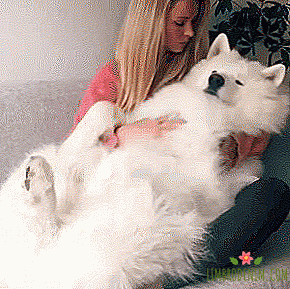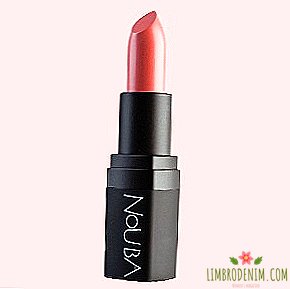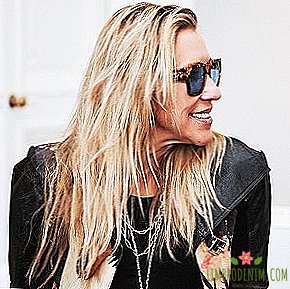You deserve it: How did the image of women in advertising
The problem of advertising, creating informational noise, is also in the amazing sexism of the presentation. California designer Sintia Petrovich several years ago launched the blog "Do I Offend", in which she began to structure such advertising, highlighting its regularities and thematic layers. Looking at the talented compilations of sexist advertisements from the middle of the last century, we tried to figure out which direction the advertising images of women had changed compared to the era of the Mad Men series, and looked at several fresh and significant precedents for the gender theme.
What advertising was before

Clear summer day. An attractive, tastefully dressed woman stretches to a picnic basket, but this idyllic picture is disgusting to her companion. "She is one in a million," the man thinks, "she dances, she cooks, she looks great. But all her virtues were destroyed by the haposis." Gapozis, so you know, this is an unforgivably long distance between the buttons on the skirt - and he has just destroyed the privacy of this charming lady. If she gets to her marriage, another problem awaits her - dishpan hands: before the dishwashers spread, women had to wash the plates by hand, which made the skin on their hands too rough. There is another danger - there is a cheerful advertisement of Schlitz beer walking around the network, where a husband consoles his wife who slept supper with a smile, saying: "Do not worry dear, at least you have not burned beer!"
These are just some of the examples of advertisements in vintage women's magazines, such as Ladies' Home Journal still alive today, collected in the blog "Do I Offend" by Cynthia Petrovich. Not bad understanding the social sciences, she found in the advertising its internal logic and structure, which is reflected in the rubricator of the blog. For example, a separate section Petrovich assigns advertising devoted to problems with weight - excessive, or, conversely, insufficient. In the 50s the ideal of the female figure was far from the typical modern gloss that had come down from the pages. Thinwork often became the object of caustic ridicule and a serious problem that had to be urgently addressed with the help of drugs like Wate-On. No less concern was the condition of the skin or the smell: “Remember,” says the text on one such advertisement, “your hair absorbs an unpleasant smell.” The key point in such advertising is the exaggerated value of public evaluation, even to the displeasure of their own children.
The disadvantages of American women were strongly emphasized - if you do not eliminate them, something terrible will happen: either no one will call you on a date, or other women will start letting out stinging jokes, or the male boss will refuse to be employed. Something that was meant as a compliment - “Your wife does not cook? Do not divorce, let her be your pet,” a woman could only find in a cafe ad.
How the economy has affected advertising

In American society since the post-war baby boom, the habitat of a middle-class woman was a kitchen, and at the very least a store with food and household goods. With the rise of feminism, the development of equal rights movements and the sexual revolution in the 1960s, social patterns that were familiar to previous decades began to show noticeable cracks. Liberalization of the social sphere could not but affect the pliable advertising market, even if it happened gradually. Since then, frankly sexist advertising has met less and less, and the advertising image of an independent woman, independent of a strong male shoulder, eventually became more advantageous.
However, this medal had a downside. Having adopted liberal trends in the sexual sphere, advertisers used them to create a hypersexual product. The objectification of a woman as an object of possession has been replaced by the universal objectification of the female body: if suddenly it falls short of the images replicated in advertising, then this must be urgently corrected. "Sex sells" is a familiar formula, the popularity and effectiveness of which can be estimated by anyone who has everything in order with his eyesight. The global spread of sexuality standards and relevant advertising images leads to surprising consequences - from the notorious increase in the cut of eyes in Korean teenagers to the boom on skin whitening creams in India. In modern advertising and media, the fashion for hypersexuality has found the perfect embodiment in the image of an anorexic model, looking at consumers from advertising posters and filming in gloss and perfectly suitable for the realization of various products - from cosmetics to burgers. Therefore, it is not surprising that the American feminist and author of the book “The Myth of Beauty” Naomi Wolf emphasizes that this situation is not the result of obsolete patriarchality, but of good old capitalism, perfectly aware that sex is true sells.
What has changed in advertising with the advent of political correctness

But there is another internal trend associated with increased attention to ethics in the Western world and the so-called gender mainstreaming. This concept, in fact, denotes political correctness in matters of gender relations, which is also reflected in certain rules governing advertising content. For example, in Norway, in the late 1970s, the first attempts were made to limit sexual discrimination in advertising, which resulted in separately written regulations. In many other Western countries for a long time they relied on self-regulation by advertisers and customers, but today norms like the Norwegian are more common. In Britain, they became part of the single Equality Act of 2010, and anyone can complain that an advertisement is discriminatory for women.
In connection with these changes in the cultural landscape, many large companies are ready to rethink stereotypes of female beauty and at the same time deal with gender stereotypes. One of the trendsetters in this case is the manufacturer of cosmetics Dove, recently presented a number of extremely successful examples. The campaign "Dove Real Beauty Sketches" in an original way demonstrates how understated can be the ideas of women about their own beauty, especially in comparison with the opinion of strangers. Another example: "Selfie" is a big and successful from the point of view of feedback, a project that reinterprets the concept of beauty by refusing to use filters for selfies. In the advertisements of the 50s, that thinness, that fullness, was easily turned by advertisers into obvious feminine flaws, while Dove turned them into objects of pride. Be yourself, do not lose your individuality - today, with these seemingly typical for an individualized society, mantras begin to work more and more successfully, which reflects the liberal shift in the gender sphere.

All these examples look quite harmless compared to the American Apparel advertising campaigns, which, under the flag of revaluation of values and non-standard, contradictory ethics, manage to provoke scandals every time. The heroes of the provocative filming of the Californian brand are both employees of the company of different ages, shapes and colors, and, say, porn star Sasha Gray. Here, the naturalness of the models is mixed with deliberate frankness; sex continues to be sold, but without the polished and glitzy picture. In the case of American Apparel, scandal often reaches a double effect, causing conflicting feelings (and, of course, attention) to the public, but also forcing discussion on ethical issues.
By and large, in the American Apparel campaigns, as on litmus paper, there are two trends that do not get along well with each other: attempts to present the model in the most natural and human way and provocative intonation, more characteristic of hypersexual advertising. The author of the blog "Do I Offend" is inclined to say that the situation has changed slightly since the middle of the last century, and today's world of advertising is full of stereotypes. Of course, hypersexuality continues to sell well, but can cause a fierce resistance from the public - at least take a ban on advertising Carl's Jr. with Kate Upton.
It is difficult to imagine such opposition to stereotypes in the 50s and 60s. And most importantly, what has changed in comparison with that era is the content of advertising, which is becoming more and more pliable for ethical control and self-control. The advertising image of a hysterical housewife, burdened with care for dinner, would not just look like a monstrous anachronism today - he would have been hacked to the brim in a nearby agency. In this light, the example of Dove and other advertising campaigns presented below signal a more socially responsible and encouraging development vector, thanks to which the advertising market and media today are less influenced by gender prejudices and try to follow the ethical vanguard themselves.
Cases in which gender stereotypes are destroyed
Bodyform
The legendary response from Bodyform, a British manufacturer of women's pads, on Richard Neil's post on social media. In his commentary, Richard laments that his ideas about menstruation, shaped by advertising, turned out to be completely far from the truth. He hoped his girlfriend would roller-skate, jump with a parachute and laugh endlessly, but instead saw a fury "filled with poison."
With this work, the agency Carat not only showed how to instantly respond brilliantly to current events (the answer was recorded and posted less than a week after the publication of Richard's commentary), but also forced to reconsider the approach to understanding the entire category of feminine hygiene products. In the video, gender stereotypes and cliches are sarcastically challenged, women's "secrets" openly open up. Good move, awesome script, great game. Do not forget, this is 2012! Perhaps this is the best that has been done in promoting this product category on the market.
Plan Belgium
Another campaign of the Belgian agency Duval Guillaume for the organization of Plan Belgium, which helps children to defend and exercise their rights in society. This time the work was aimed at combating discrimination against women. In one of the Belgian schools, girls were removed from their classes and forced to do “female” work: peeling potatoes, washing toilets and floors. Of course, the children met such innovations with a lack of understanding and a strike, which Plan Belgium employees were waiting for.
In this case, the mechanics worked out and traditional for Duval Guillaume, where the provocative non-standard becomes a virus, are based on absolute sexism, reduced to the point of absurdity. It works great and clearly conveys the message.
Toshiba
The amazing large-scale work of Pereira & O'Dell from San Francisco for Toshiba laptops with an Intel processor. The audience evaluated computers exclusively in appearance, while Toshiba and Intel decided to focus on what was inside. The agency invented an incredible campaign: a touching series from 6 episodes appeared on the network, the main character of which wakes up every day in a new body. Alex tries to figure out what's going on with him, and he records appeals to himself through a webcam. It was this form of video diaries that made it possible to include in the series a huge number of viewers who recorded and posted appeals on Facebook on behalf of the hero.
The work has collected an incredible number of awards at advertising festivals, it can be found on resources devoted exclusively to cinema, as a self-sufficient series, and Alex played more than 50 spectators. The strongest idea of "The beauty inside" frees us from any stereotypes and returns faith in ourselves. Absolutely not important is your gender, nationality, eye color, hair length, height and age - it is important what kind of person you are and what is inside you.




